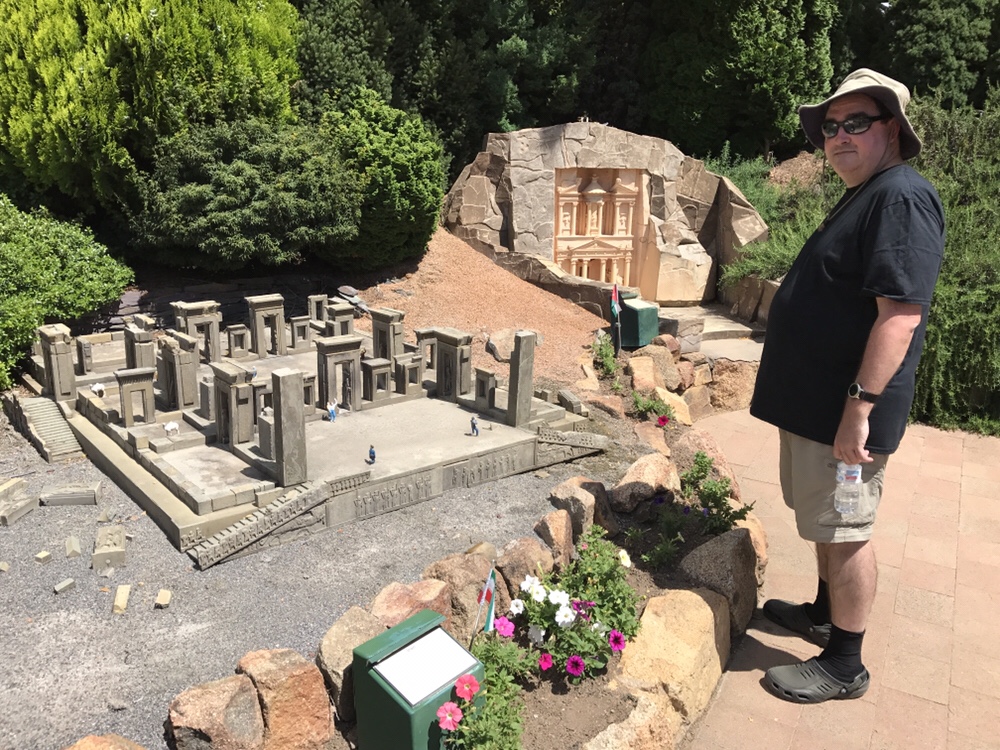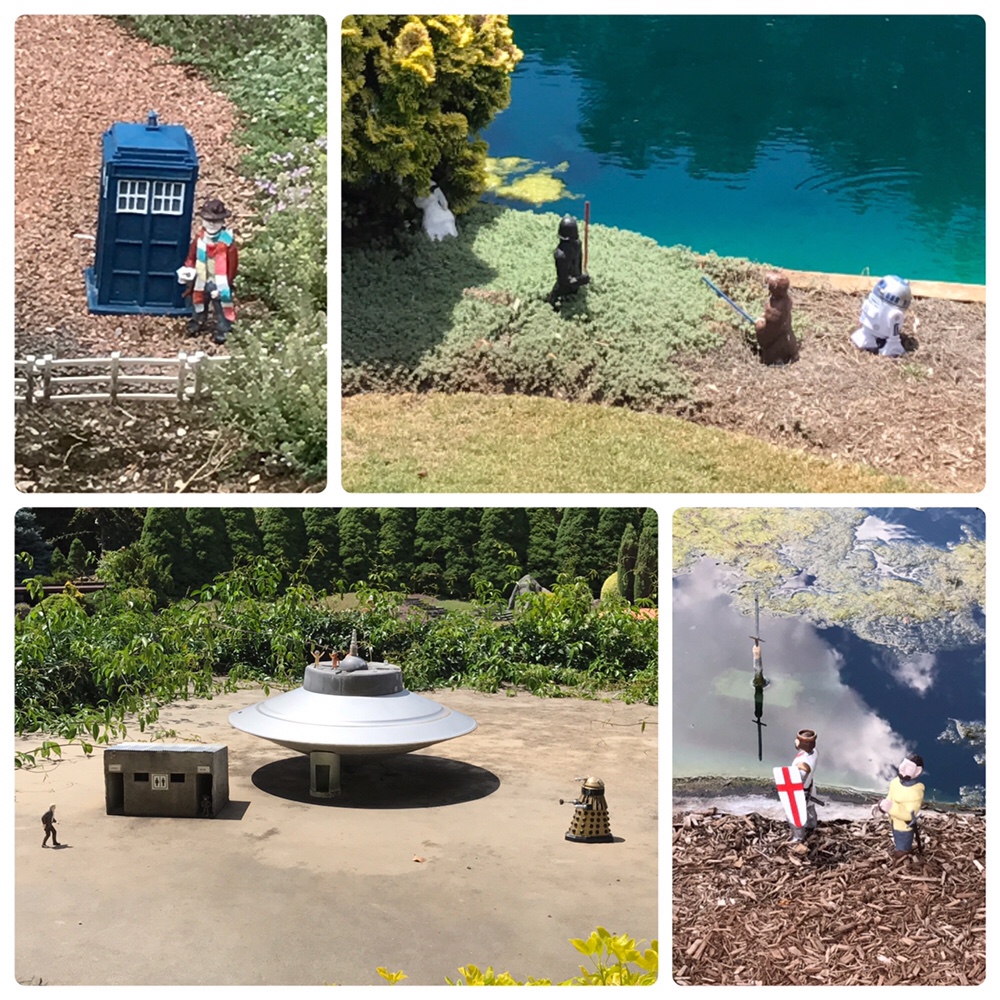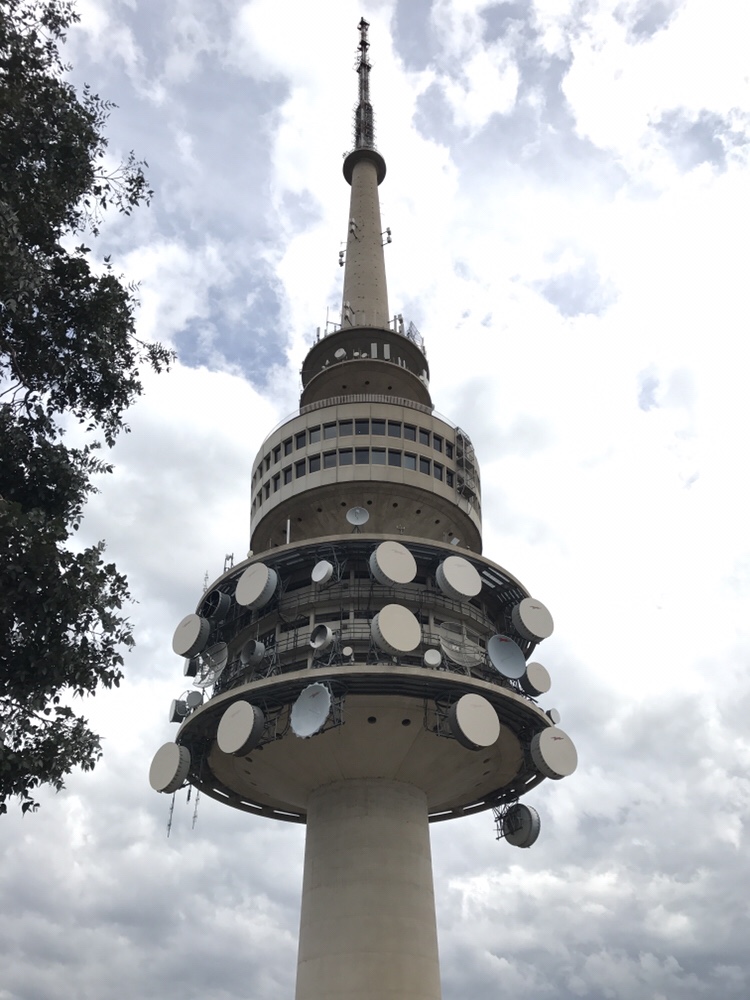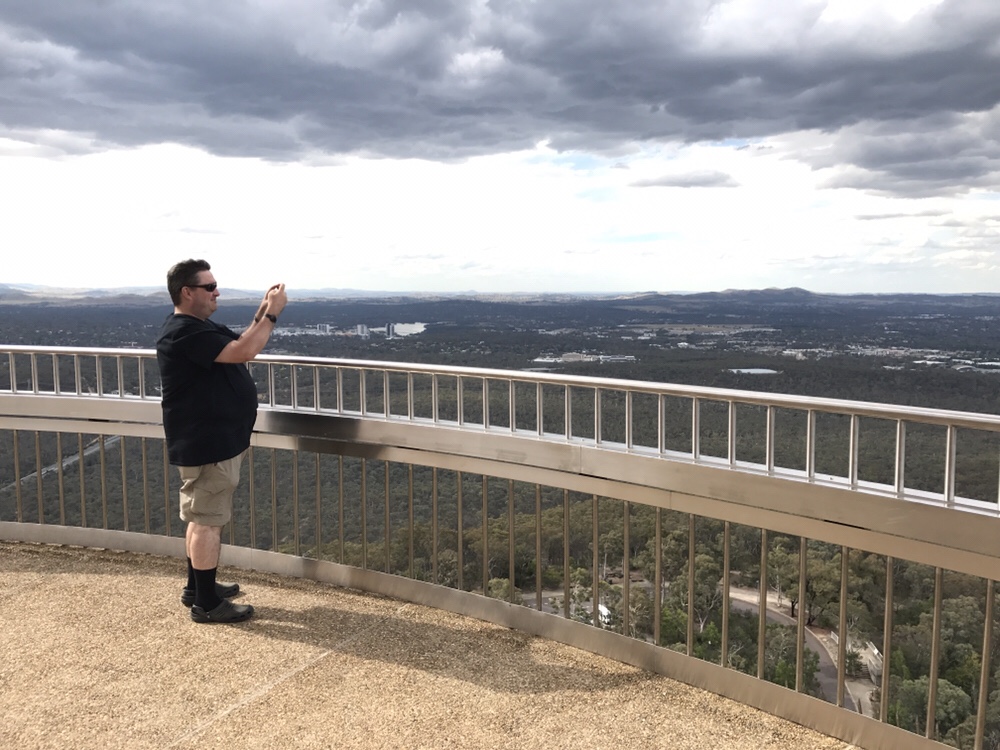Yesterday was a full day that took us into the ACT and Australian capital of Canberra. On the way we stopped at the world (?) famous Dog On The Tucker Box:

This is a statue about 5 miles from Gundagai. You can enjoy it yourself in the photo, and rest assured there’s not much else to see if you actually visit! I did buy a $2 tamagotchi knock-off at the adjacent rest stop though 🙂
A little over an hour later we arrived at our motel which is conveniently located next to our next destination which was the miniature village of Cockington Green.

We visited this place about 35 years ago as kids, and I’m reasonably sure we’ve changed more than it has!

It’s a linear path through a series of mostly 1/12 scale miniatures. About 2/3rds of the place is themed after the UK and the remainder is international. There’s a decent amount of variety but we both thought the detail could be better. There’s also a short steam train ride which costs extra. It’s not very big; you could easily see it all in an hour.

If you look closely you can see some cute little hidden scenes scattered around. But looking close also reveals areas in need of repair, such as fallen figures, missing paint, broken electronics etc. Surely these could be seen to?
I don’t want to dump on the place too much, but it’s not inexpensive for what it is, and one might expect a little more maintenance for the price. I’m glad we went again after so many years, but I doubt we’ll be returning in another 35 years 🙂

That’s Telstra Tower, which overlooks the city of Canberra from nearby Black Mountain.


And that’s Canberra! It’s a great view from the outdoor viewing platform but it was very chilly and windy up there! It’s a good tower though, and great value for the (low) cost.

Today we head east for the coast and another town we haven’t visited for 35 years. At this point the day is a blank slate: what will we find?!?














